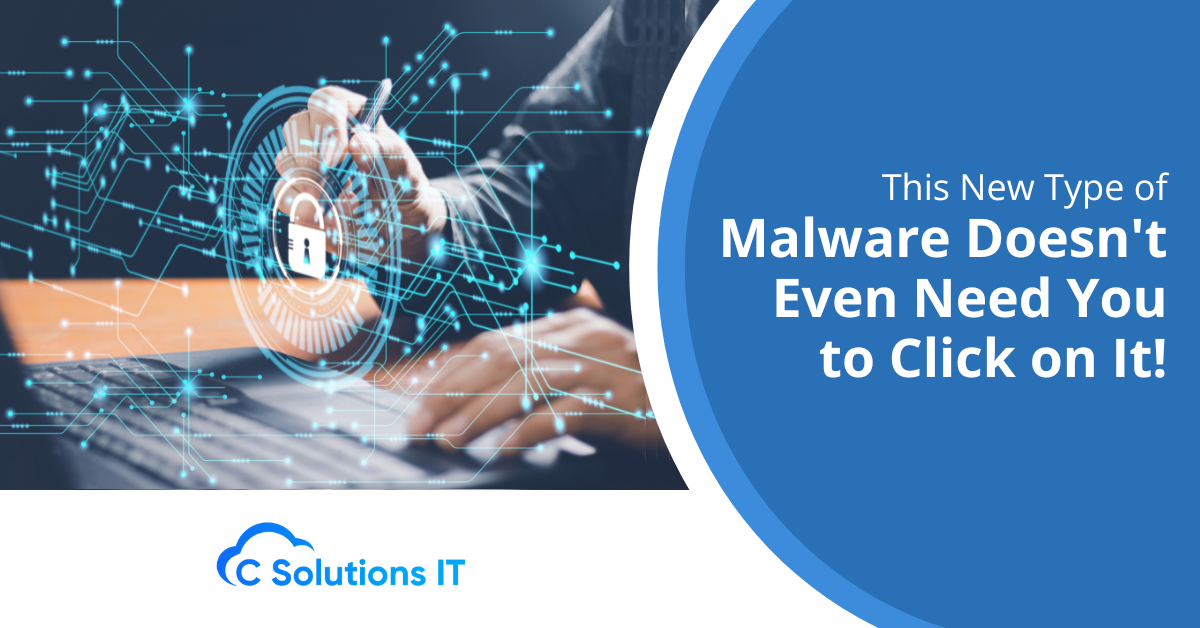This New Type of Malware Doesn’t Even Need You to Click on It!

As technology continues to advance, cyber threats have become a major concern for individuals and organizations worldwide. Malware, which stands for malicious software, has been a persistent issue for decades.
Usually, malware infects a computer or network by tricking users into clicking on a link or downloading a file. However, a new and dangerous type of malware has emerged: zero-click malware, also known as “fileless malware,” doesn’t require users to click on anything.
In this article, we will explore what zero-click malware is, how it works, and what you can do to protect yourself.
What is Zero-Click Malware?
Zero-click malware is a type of malware that requires no user interaction to infect a device. This malware can infect a device without the user clicking on any link or downloading any files.
Zero-click malware is designed to exploit vulnerabilities in operating systems, software, and hardware. It can be delivered through various channels.
How Does Zero-Click Malware Work?
Zero-click malware operates by exploiting vulnerabilities in the target device’s software or hardware. It uses complex algorithms to locate and exploit weaknesses in the operating system or other software installed on the device.
This can include known or unknown vulnerabilities that may not have been addressed by the device manufacturer. Once the malware has gained access to the device, it can begin to carry out its malicious activities.
What are the Dangers of Zero-Click Malware?
Remains Undetected for Extended Periods
Zero-click malware poses a significant threat to individuals and organizations alike. Since it can infect a device without any user interaction, it can remain undetected for extended periods of time, allowing the attacker to carry out their activities without being detected. This can include stealing sensitive information, installing ransomware or other malware, or using the device as part of a botnet.
Difficult to Remove
Another danger of zero-click malware is that it can be difficult to detect and remove. Traditional antivirus software relies on scanning files for malware signatures.
However, since zero-click malware doesn’t rely on files, it can evade detection by these types of software. This means that organizations and individuals need to use other methods to protect themselves from zero-click malware, such as implementing intrusion detection systems, conducting regular vulnerability assessments, and performing network monitoring.
How Can You Protect Yourself Against Zero-Click Malware?
Protecting yourself against zero-click malware requires a multi-layered approach. Here are some tips to help you stay safe:
Keep Your Software Up-to-Date
Hackers often exploit vulnerabilities in outdated software. Make sure your operating system, web browser, and other software are up-to-date with the latest security patches.
Use Antivirus Software in combination with Threat Hunting and Zero Trust security solutions
While traditional antivirus software may not be effective against zero-click malware, it can still provide an additional layer of protection. Make sure your antivirus software is up-to-date and set to automatically scan your computer for threats. Threat Hunting solutions will search and find behaviors that act suspiciously and zero trust security solutions will stop any process or application from running or installing if not given explicit permission by your security provider.
Use a Firewall
A firewall can help block unauthorized access to your computer or network. Make sure your firewall is enabled and set to block incoming connections from unknown sources.
Be Careful What You Click On
Avoid clicking on links or downloading attachments from unknown or suspicious sources. Be wary of emails, text messages, or social media messages that ask you to click on a link or provide personal information.
Use Two-Factor Authentication
Two-factor authentication adds an extra layer of security to your online accounts. It requires a second form of verification, such as a code sent to your phone, in addition to your password.
Monitor Your Network
Regularly monitoring your network for suspicious activity can help you detect zero-click malware attacks.
Use Network Monitoring Tools
Another approach is to use network segmentation to isolate critical systems and data from other parts of the network. By separating sensitive data and systems from other parts of the network, fileless malware can be contained and prevented from spreading throughout the organization.
Create a Response Plan
Finally, it is essential to have a response plan in place in case of a fileless malware attack. Your response plan should include steps for identifying the attack, containing it, and removing the malware from your systems.
You should also have a plan for restoring your systems and data to their pre-attack state. Regularly testing your response plan can help ensure that you are prepared to respond quickly and effectively to a fileless malware attack.
Protect Yourself Today
Zero-click or fileless malware is a growing threat that can cause significant damage to individuals and organizations. It is a stealthy attack that can operate undetected for an extended period of time, making it difficult to detect and remove.
However, by following the best practices and using a multi-layered approach to security, you can minimize the risk of a zero-click malware attack. Keeping your software up-to-date, using antivirus software and a firewall, being careful what you click on, using two-factor authentication, monitoring your network, educating your employees, implementing least privilege access, conducting regular penetration testing, and having a response plan in place can help you stay one step ahead of fileless malware attackers and keep your data safe.
If you need assistance strengthening your cybersecurity infrastructure to protect against zero-click malware, contact C Solutions today for support.
